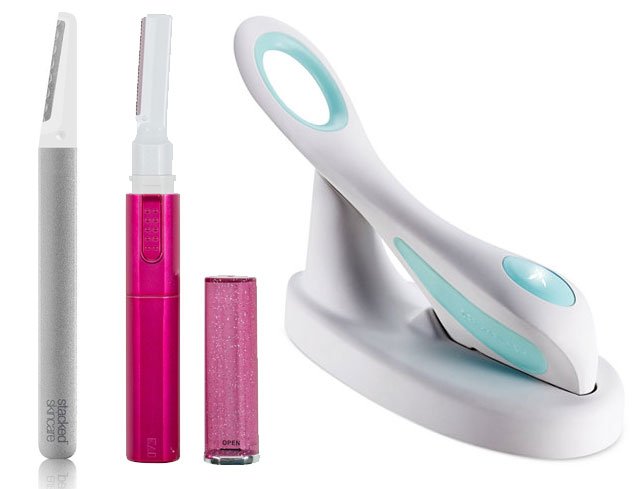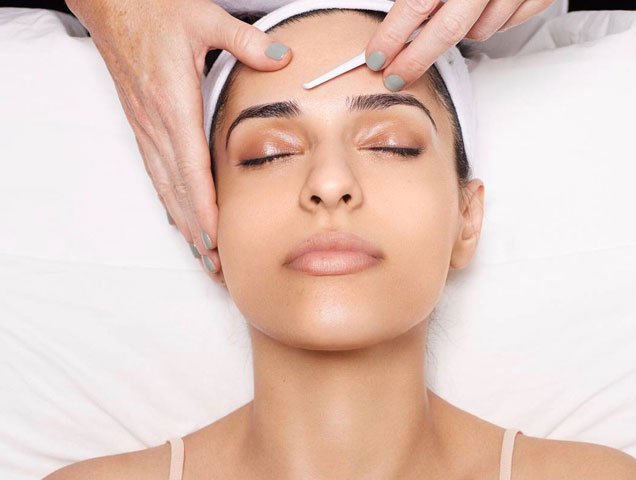We’ll let you in on a little secret: women have facial hair. While some have baby-fine, barely visible hairs, others have coarse, dark hair — or any combination of the two. Yet, for some reason, women tend to consider facial hair a shameful secret while bleaching, waxing, tweezing and even shaving in private. Lately, a buzzworthy new hair removal technique called dermaplaning has women coming out of the facial hair closet and raving about their experiences with the treatment.
Dermaplaning is an alternative to a traditional razor that uses a sterile surgical scalpel to gently remove facial hair. It’s great for exfoliation because as it’s removing hair, it’s also removing dead skin cells. According to the founder of DermWarehouse, Dr. Alan J. Parks, it can even do more than that. In fact, removing peach fuzz is merely a welcome side effect.
Dermaplaning was conceived as a way to “strip the outermost layer of the skin so as to improve the appearance of wrinkles, scars and improve skin tone.” Further, it helps skin care products penetrate more readily because of the aforementioned dead skin cell removal. Parks does caution that you may be red or puffy for a day or so but other than that, there’s no real downtime.
Office Versus At-Home Treatments
As you might imagine, dermaplaning at a dermatologist’s office is more effective than at-home treatments. “If you’re attempting to do this at home, it’s important to understand the technique, ensure that you’re using a device meant for home use and how to correctly use it,” says New York City cosmetic dermatologist Dr. Sejal Shah, founder of SmarterSkin Dermatology. Shah recommends using at-home products about once a week and says the Noxzema About Face Sonic Beauty-Wand, StackedSkincare Dermaplaning Tool or Dermaflash Facial Exfoliating Device are solid options. At the office, you’ll only need a treatment every four weeks or even longer.

Who Shouldn’t Try Dermaplaning?
If you have coarse hair, dermaplaning won’t work for you. Parks also cautions against it if you have any infections on your skin (including acne), open areas or a history of cold sores. Those with sensitive skin may also see some irritation. “If you do have a history of cold sores and still want to have this done, be on medication as the dermaplaning can trigger a cold sore. Anyone with sun damage, acne scars, wrinkles is a candidate.”
How Does Dermaplaning Compare to Chemical Peels, Microdermabrasion or Shaving?
Chemical peels and microdermabrasion are exfoliating treatments but, unlike dermaplaning, will not remove hair. “In terms of which offers more aggressive/stronger exfoliation, that depends on a number of factors (assuming we are comparing in-office treatments only), such as strength of peel, specific tips used for microdermabrasion and pressure used with dermaplaning,” explains Shah. “Depending on the type of tip used, microdermabrasion may be a little more abrasive on the skin and creates pressure due to the vacuum, so dermaplaning is likely more gentle on the skin compared to microdermabrasion, but provides equally effective exfoliation.”
As for shaving with a regular razor, it can lightly exfoliate skin and remove hairs, but will also remove thicker, coarse hairs. According to Shah, however, an office dermaplaning treatment would still provide more exfoliation.
[ Next: Before You Wax: We Rank the 8 Best Hair Removal Products ]




